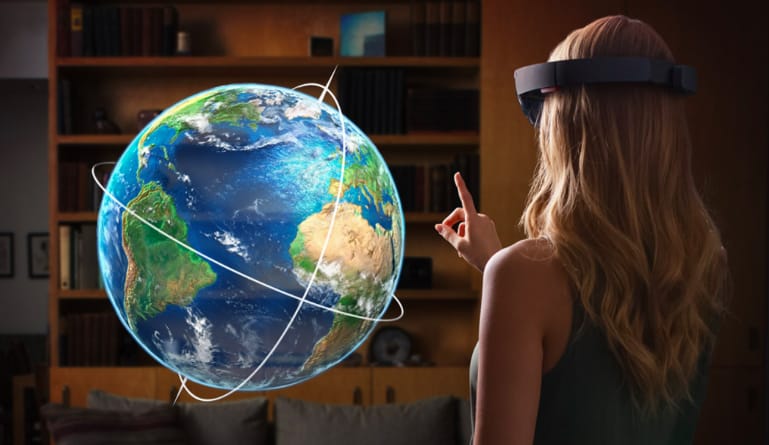According to a Goldman Sachs report, virtual reality hardware can grow to be an $80 billion industry, showing that virtual reality technology is slowly developing to show a lot of potential, especially mixed reality. Mixed reality technology has grown to become a next-generation digital experience that can help consumers interact with “intelligent virtual objects” within the real world. Through wearable head displays, users can enjoy the best of both worlds. Researchers have found that variety of industries, including healthcare and engineering, can find it very beneficial to apply this technology into their workforces and processes.
Mixed reality has the potential to recognize and recommend material necessary to complete a task. However; due to it still being in a development stage, only certain mixed reality technology is sophisticated enough to execute this full experience. In order to create this experience, it’s important to have these two software pieces:
Image recognition – In the most basic form, it’s a computer system’s ability to identify and detect objects or features in a digital image or video. Mixed reality uses more advanced image recognition and has the ability to identify walls, floors, and a variety of other sophisticated objects that a worker can interact with.
Simultaneous Location and Mapping – This technology helps mixed reality locate objects and map environments. This is the key to mixed reality because it helps with locating and tracking objects and movements.
With these two developed pieces, mixed reality has the potential to change and improve many businesses, here’s how:
Productivity and Flexibility: With the ability to bridge two worlds together, mixed reality has the power to connect through wearable headsets. For example, language barriers can become irrelevant as mixed reality can potentially translate in real time, meaning there is a lot more room for collaboration and flexibility. With this type of technology, many different people around the world can work together at different times and can foster an environment of productivity. Looking at today’s business world, productivity tends to be inhibited by inflexibility however; this new technology can seem to change that.
Accessibility: One of the most beneficial aspects of mixed reality is how accessible it can be. Because the technology is essentially a headpiece with a few other small pieces of equipment, people can take and use it anywhere. For example, one of the most commercial use of mixed reality is through Tilt Brush, a VR experience that allows you to draw in a 3D space. Imagine using this type of technology in construction or architecture. We can potentially show and work with blueprints on a 3D level that can be more interactive and collaborative.
Augmented realty, virtual reality, and mixed reality all seemed like technology from sci-fi movies and books, but as our society and technology grows, this fictional concept is becoming a reality. As technology continues to develop, there is a lot of potential for mixed reality, especially in the business world. It can help improve productivity, flexibility, and collaboration. Before you know it, you may find mixed technology in your work environment as well.





